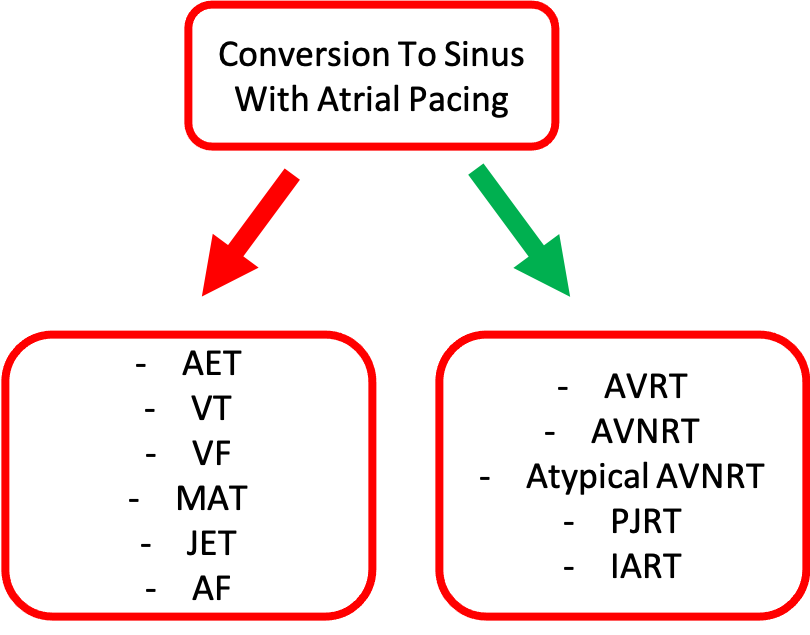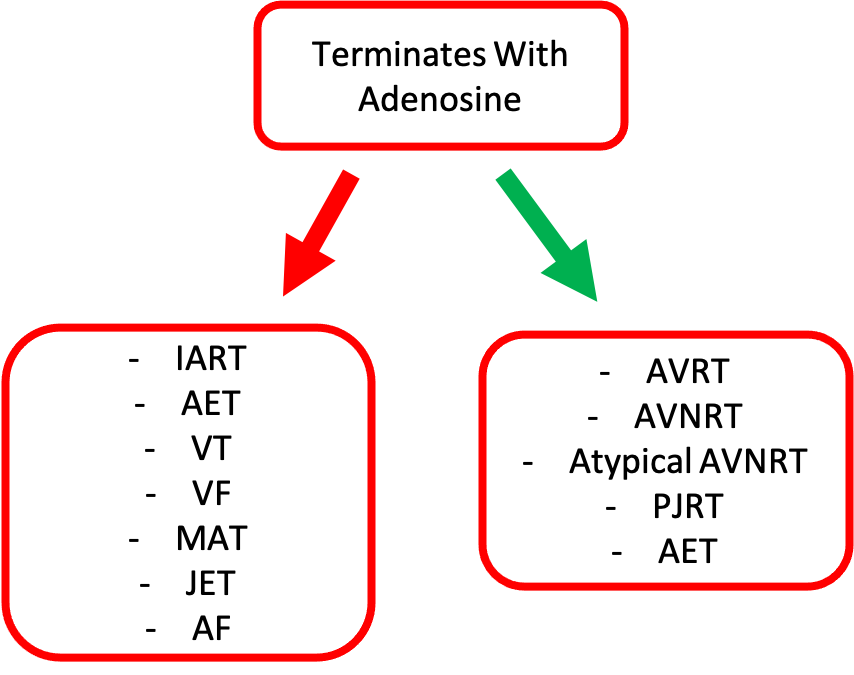Adenosine acts to transiently block AV nodal conduction. If the clinical situation would allow, adenosine can help to uncover the origin of arrhythmia or to terminate the tachyarrhythmia to sinus.
If the administration of adenosine results in more atrial or more ventricular signals without termination of the arrhythmia then the appropriate algorithm (A or B) may be used to assist with rhythm identification. As many of the common supraventricular tachycardia are AV nodal dependent, adenosine may also terminate the arrhythmia to a sinus rhythm. Termination of the arrhythmia with adenosine suggests the arrhythmia was dependent on the AV node, though some focal arrhythmias (both atrial and ventricular) can be adenosine sensitive.
Atrial pacing maneuvers can also assist with both treatment and identification of the tachyarrhythmia. Many of the reentrant rhythms (IART, AVNRT, AVRT) can be pace terminated with atrial overdrive pacing. Many of the automatic rhythms (AET, JET, idioventricular rhythms) are suppressed when pacing at a rate higher than the arrhythmia rate. This arrhythmia suppression can be especially helpful if atrial pacing provides AV synchrony which may be absent during certain arrhythmias. Automatic rhythms often return after the atrial pacing is stopped.

